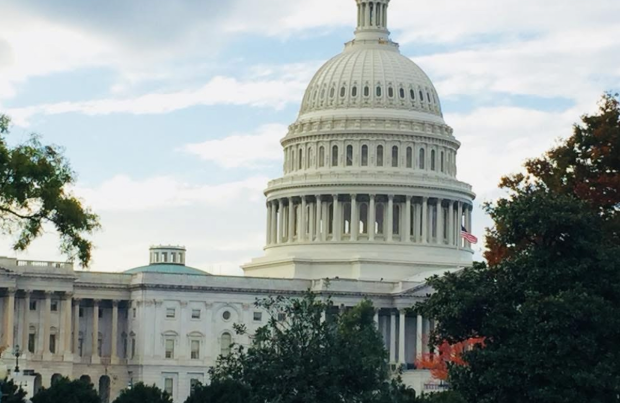On March 11, 2025, the federal government began the process of reducing the department of education’s force. Nearly 2,000 employees either accepted voluntary resignation opportunities or were laid-off throughout the process.
This marks the beginning of the attempt to dismantle the Department of Education (ED) by President Trump and his cabinet. The ED was established 1980, its mission, according to the department’s website is to “promote student achievement and preparation for global competitiveness by fostering educational excellence and ensuring equal access.”
The ED helps fund various programs in local districts, including the Title I program. Title I is a program established in 1965 by the Civil Rights Act and is now part of the Every Student Succeeds Act (ESSA) which was introduced into schools to try to provide support and benefits for low income students. Schools where 40% or more of students are from low income families are Title I eligible. In the 2021-22 school year, about 63% of traditional public schools and 62% of public charter schools were Title I eligible.
Title I programs can provide a myriad of benefits to schools including helping pay for student lunches and extra support staff. These schools are prone to a higher amount of teacher turnover than other public schools, having a 29% turnover rate compared to 19%. The programs provide extra funding for teachers, promoting employee retention and decreasing turnover.
The program is required to be funded every year by the ED, but there are little regulations for a minimum amount of funds. If the ED is dissolved, the states or another department will have to take over the Title I program. It is not ensured that another department will add any funds to the program, meaning the states could have to fund it with no federal support. According to Chris Heagarty, Wake County Board of Education Chair, “It has not been finalized whether Title 1 funding will be completely eliminated or transferred to another office.”
Even if the program is kept and transferred to another department, there is concern that this could still induce negative consequences. “Even if funding is not eliminated outright, shifting responsibility from one federal agency to another could create bureaucratic delays, uncertainty, and gaps in services,” he said.
The Project 2025 plan, a conservative presidential plan published in 2023 calls for the Title I program funds to be distributed to states in a block grant. A broad grant like this could allow states to disperse the funds with more flexibility, but reduced federal oversight could impact the program’s effectiveness. The plan outlines recommendations for how the country should be led under conservative leadership. President Trump denounced the plan during his campaign, but after his election has enacted policies from the plan. The program’s plan for Title I funding aligns with President Trump’s view of giving education control back to the states.
States are now trying to conserve any funds they have in preparation for the potential cuts or disruptions in federal funding. Heagarty expressed concern for the nearly “$28 million in Title I funding [that] supports schools with the highest percentage of low-income students.” In Wake County, spending has been limited to only core operational needs of the district in an effort to preserve funds that may not be replenished in the coming year. Additionally, hiring for janitorial, support and bus driver positions has been frozen.
Wake County is already experiencing the effects of federal funding cuts. A $11.78 million federal grant that helped the county establish the LEADERS program has been cut. The program allowed the county to hire more teachers for impoverished schools along with providing teachers with bonuses, diminishing the teacher turnover rate at these schools. Majority of the schools funded by the program were elementary and middle schools, which may now face challenges hiring and retaining teachers.
Furthermore, the potential for the Title I program to be fully eliminated remains. Heagarty alluded to the possibility. “Policy proposals in Washington, DC have called for phasing out this program.” Multiple congressionally mandated initiatives have already been stripped of funding, such as the Educational Research Laboratories and Equity Assistance Centers (EACs). The Department of Education cited that the contracts of the programs were “wasteful and ideologically driven spending not in the interest of students and taxpayers.” The Department of Education has also recently cut $600 million in grants that were used to help train teachers and education agencies, stating that training materials in these programs “included inappropriate and unnecessary topics such as Critical Race Theory; Diversity, Equity, and Inclusion (DEI); social justice activism; ‘anti-racism’; and instruction on white privilege and white supremacy.”
Not all of the programs being cut are wasteful, many of them support economically disadvantaged groups. “Many marginalized communities are the greatest recipient of federal funding, for example through the Title I program that serves schools with the most economically disadvantaged families,” Heagarty said, “Likewise many important programs that could be cut provide important human services to students experiencing homelessness, abuse, or suffering from mental or physical illness.”
Without the Title I program, Heagarty outlined that schools where the program is necessary will struggle to keep up with other schools, “Without these funds, high-poverty schools will struggle to provide essential support, leading to greater disparities in student success”, he said. “[Eliminating] federal funding would cause significant harm to students, families, and our community.” With less assistance, students at disadvantaged schools will continue to fall behind their peers, creating greater gaps between students. Areas that have schools that are already struggling may fall further behind due to the gaps in funding, affecting the broader community.
As next year’s budget develops, it will become clear if Title I programs will receive federal funding and the form it may come in. Whether it comes in the form of a block grant to the districts, from various federal Departments or disappears, constituents still have a voice, especially in local districts like Wake County. “I encourage everyone to follow school board discussions and next year’s budget process,” he said. “More directly, please let everyone you know that state and federal funding decisions directly impact our schools and that these cuts will directly impact all Wake County public school families.”















































































